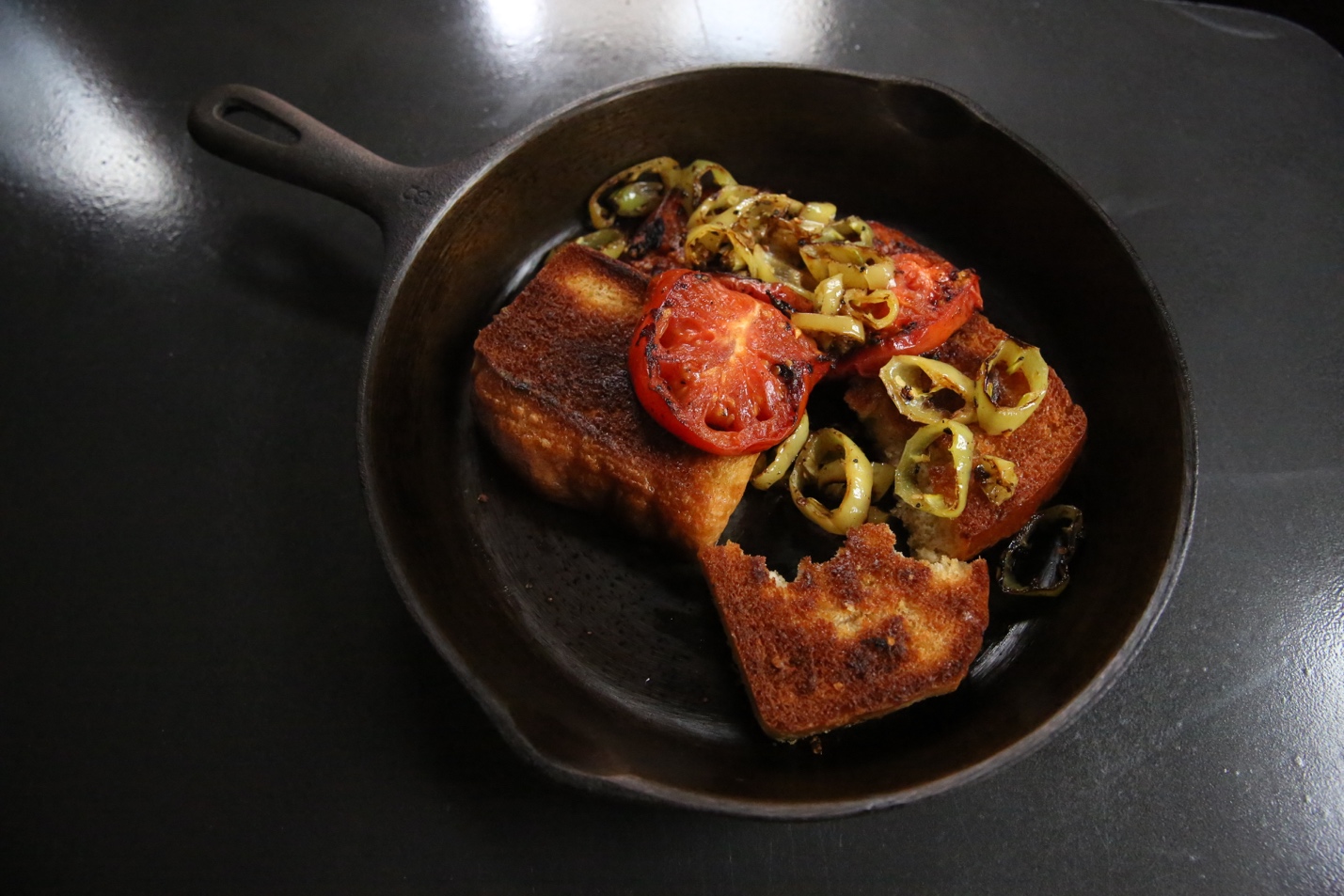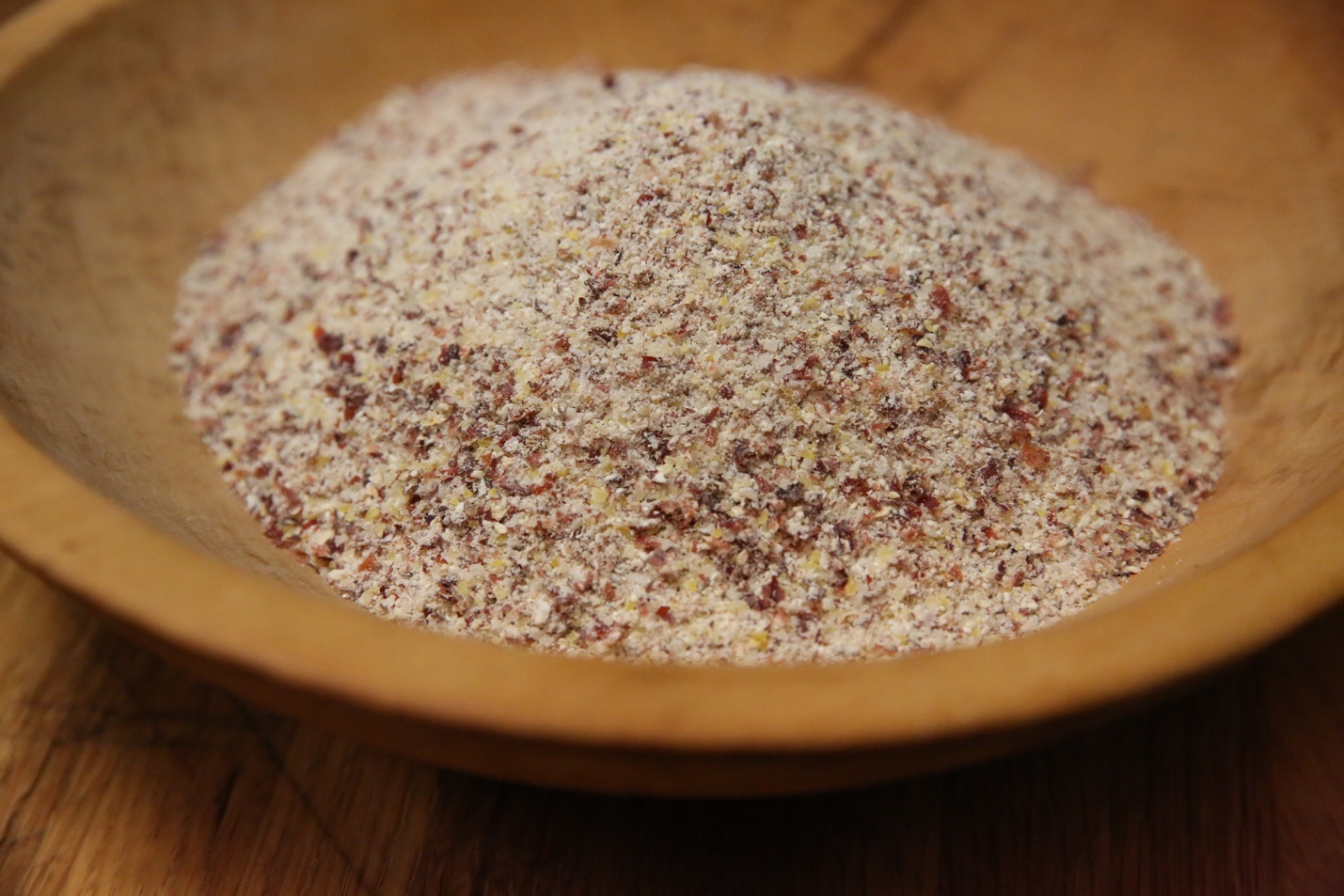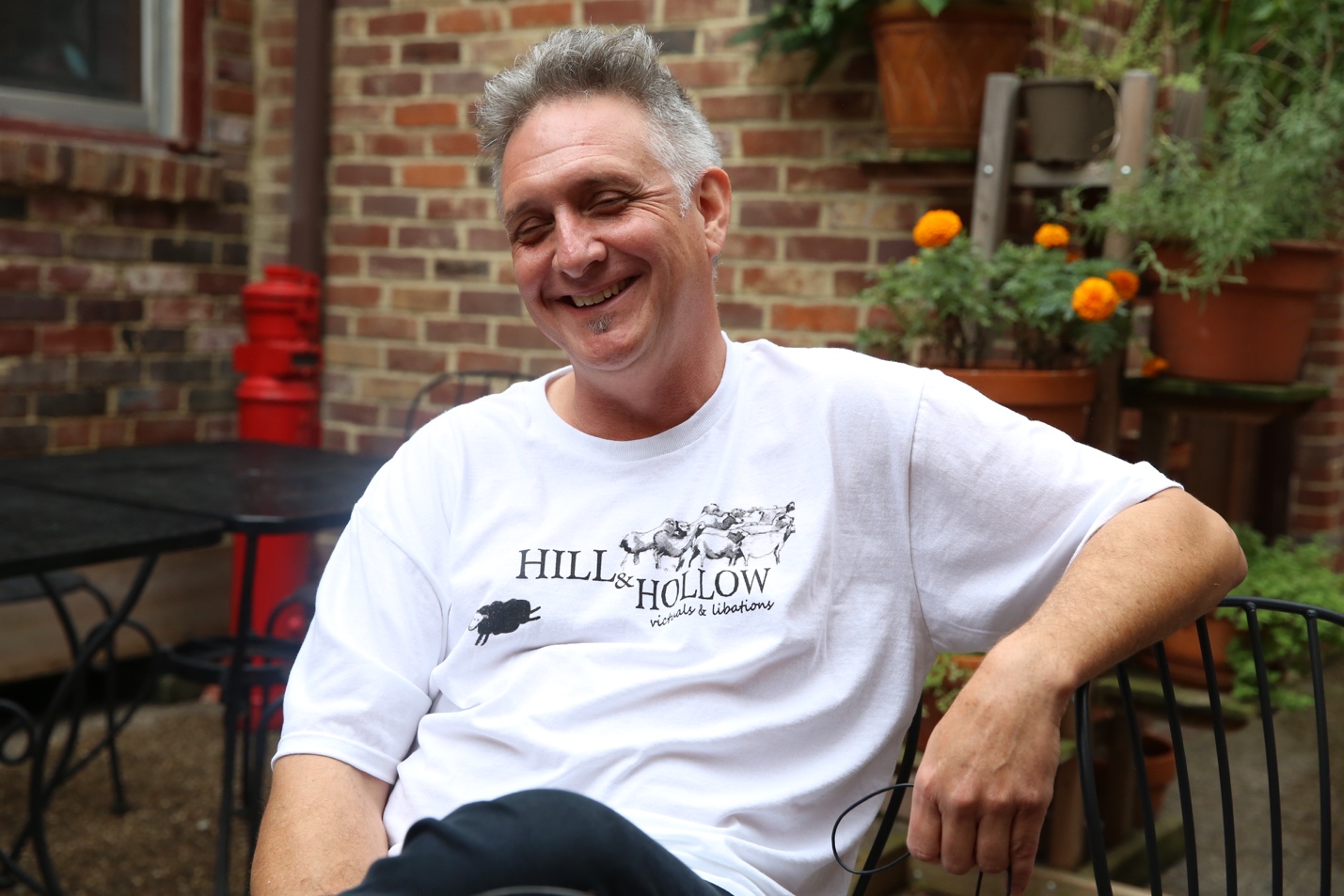“Comfort food is for cowards, that ain’t what we do here,” Chef Marion Ohlinger tells Food Tank. A 12th-generation West Virginian, Ohlinger was born and raised on his family farm and now owns Hill & Hollow restaurant in Morgantown. As part of The Crop Trust #CropsInColor in Appalachia tour, he welcomed Food Tank into his kitchen to learn about what he calls modern Appalachian cuisine—and why it’s important to keep it in Appalachia.
“We do traditional food, but not normal traditional,” he says. For Ohlinger, this means “not losing what we have, but building other things into it.”
Ohlinger works with local farmers to incorporate native Appalachian crops into his dishes while paying homage to other cuisines. As he serves sour corn sambal, a pickled and fermented sour corn—which is the Appalachian equivalent of sauerkraut—turned into Indonesian/Malaysian-style sambal with hot peppers, he explains: “We take something that’s intimately Appalachian and make something more worldly out of it.”
Next, he fries salt-risen bread in bacon grease, to be served with grilled tomatoes and heirloom peppers. “This is as Appalachian as it gets,” Ohlinger tells Food Tank. Salt-risen bread is a dense white bread, sometimes called pioneer bread, leavened without yeast and dating back to the 18th-century Appalachian settlers. Hill & Hollow sources from Genevieve of Rising Creek Bakery, who Ohlinger says is the world’s foremost authority on salt rising.

Having worked as a chef for 30 years, visiting more than 40 countries, 5 continents, and all 50 states before returning to his home state in 2003, Ohlinger is now seen as an authority himself on farm-to-table dining in West Virginia. When he transitioned his first restaurant, Richwood Grill, into a farm-to-table establishment in 2009, the movement had not yet reached the area—and both finding producers and getting the local community on board with traditional West Virginian food proved difficult.
“For produce, it’s hard to find people growing old-school stuff on a regular basis, because it’s not economically feasible,” he says about finding heirloom varieties.
When Food Tank asks how many farmers Ohlinger works with, he laughs. “One of the biggest problems we have is how often our farmers go bankrupt and stop farming.” According to Ohlinger, only in the last few years have people become more interested in raising heritage crops. Much of the indigenously Appalachian ingredients he serves are foraged or grown by 20 to 30 very small-scale farmers he has relationships with.
“When I was a kid, you could go to any diner in West Virginia and get old-school Appalachian food” like liver pudding, pickled pigs’ feet, and hamburg. “In my lifetime, this has disappeared. I blame it almost entirely on fast food,” Ohlinger tells Food Tank.
In 2018, West Virginia had the third-most fast-food restaurants per capita in the nation, and the second-highest number of McDonald’s restaurants per 100,000 residents, according to data firm Datafiniti. And in 2017, the Centers for Disease Control and Prevention reported that 7.3 percent of West Virginian adults met fruit recommendations and 5.8 percent met vegetable recommendations, the lowest in the nation (the national average was 12.2 percent and 9.3 percent, respectively).
Ohlinger has seen this shift in his hometown. Growing up, there were two small markets, two gas stations, a bank, and a small movie theater in town—and the same in each neighboring town—meeting all their needs through local, independent providers. “Now, there’s a Wal-Mart, a McDonald’s, and Taco Bell, and everything in our small towns is gone—they can’t compete. They’re dried up,” he says.
As chain restaurants and grocers have moved in, Ohlinger now sees much more reception towards world food in West Virginia, but much less interest in traditional Appalachian food. “It’s very frustrating,” he says. At his first restaurant in Morgantown, customers would walk out after learning he didn’t serve Pepsi.
“This was a place that was still eating muskrat and brains 50 years ago. But West Virginian food today is not adventurous,” Ohlinger says. “So, a lot of our dishes are intentionally confrontational.”
Despite hesitation by the local community to embrace native dishes, corporations and big-name chefs are starting to catch on to Appalachian cuisine, Ohlinger says. “Before five years ago, nobody here used the word Appalachian, we were just West Virginian. But Appalachian is a new catchphrase.”

According to Ohlinger, this year, none of Morgantown’s local producers have bloody butcher—an heirloom corn variety introduced to Virginia-area settlers in the 1840s that is known for its nutty flavor and red kernels, which create dark red flecks in its cornmeal, like blood splatters on a butcher’s apron. The farmer Ohlinger typically sources from sold 750 pounds (340 kilograms) of bloody butcher corn to a large foodservice company for US$2.00 more per pound than the typical farmers’ market rate. The company then sold it out at “grossly inflated prices,” Ohlinger says, and he was only able to get 20 pounds (9 kilograms) this season.
Still, an international hotel chain down the road from Hill & Hollow opened an Appalachian-style restaurant with a menu listing all local, organic, and authentic ingredients. “It’s none of that. But the place does loads of business,” Ohlinger says. “I had people telling me they served plain cornmeal with dye in it. It left a red spot on the plates where it was.”
Stories like this make Ohlinger worry that Appalachian food will become popularized by chain restaurants and celebrity chefs, and West Virginia will get left behind. “I feel like it’s necessary for people like me to be back here and stay here fighting this fight,” he tells Food Tank, “We want to show a more modern version of Appalachia before corporate gets a hold of it.”
Ohlinger admits that he and other popular chefs in the area turn down opportunities for major interviews and TV appearances, like on Chopped and Top Chef. “We want to keep it our own. Once you lose it, you can’t get it back.” To him, maintaining the integrity of the ingredients and dishes that he’s serving is more important than fanfare.
“We’re not Southern, Northern, or Eastern. We stand alone,” Ohlinger says. “There’s nobody like us.” West Virginians are proud of their independent, hard-working heritage. And there’s a lot more diversity in the state than people realize, he explains. He aims to celebrate that through his dishes.
One positive outcome of Appalachian food becoming popularized, Ohlinger notes, could be the people of Appalachia gaining a newfound appreciation for their own roots. He hopes this will come through chefs like himself serving modern Appalachian cuisine, not large chain restaurants moving in.
Ohlinger, a punk rocker himself, likens his protectiveness over Appalachian cuisine to bands suing the radio for playing their music. He doesn’t want to be on the radio. “I want to win a Grammy but still not sell a million records,” Ohlinger smiles.

The Crop Trust #CropsInColor campaign sheds light on the complexities, triumphs, and surprises of crop diversity in action. In Phase II (2018–2021), #CropsInColor takes a look at 10 crops, exploring how each in its own way has become a staple in our kitchens, markets, and favorite restaurants, no matter where we live. The campaign highlights the important role that crop diversity plays in our daily lives and the need to safeguard this precious, global common good.
The Crop Trust #CropsInColor campaign is sponsored by Corteva with additional funding provided by the Oak Spring Garden Foundation. Food Tank is the media partner.










